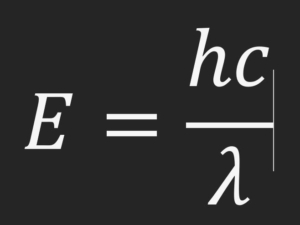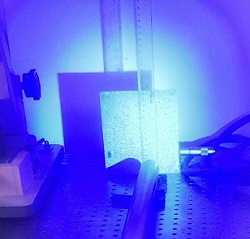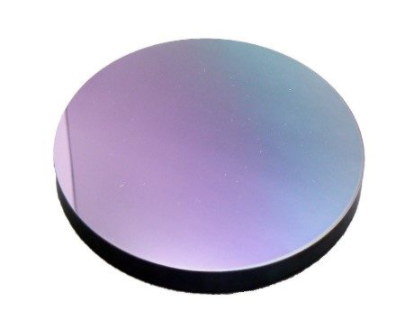UV optics : a complete guide
We all know that UV light can be used to kill bacteria, but most of us ignore why. The answer comes from the Planck-Einstein equation :

Planck-Einstein equation
Energy equals two constants (Planck’s and speed of light) divided by wavelength. We can directly understand from this equation that the shorter the wavelength the higher the energy. Ultraviolet been the shortest wavelength of the electromagnetic spectrum (second only to X-rays) it’s energy is high, higher than visible light and much higher than IR lasers.
One other characteristic of Ultraviolet is that most of the materials absorb it, therefore finding good optical material to work on the UV is not easy. In this guide you’ll learn everything you need to know about UV optics.
Ultraviolet definition:
Ultraviolet light refers to the electromagnetic spectrum between 10 and 400nm. This spectrum is not visible with human eyes and can be further divided in several sub-spectrum :
| Ultraviolet | Spectrum | Comments |
|---|---|---|
| UVA | 315-400nm | Most of UV originated from the sun reaching the earth. |
| UVB | 280-315nm | the “dangerous UV” going through the Ozone hole in the atmosphere. |
| UVC | 100-280nm | Almost not naturally present on earth, as it is absorbed by atmosphere |
| EUV | 10-124nm | Stands for Extreme Ultraviolet, only workable in vacuum with reflective optics, otherwise will be absorbed in the air or the optics material. |
What are UV optics?
UV optics, are optical components that can more or less be used as visible optics, like lenses, prisms, filters, mirrors and so on.
Many common optical materials like N-BK7, H-K9L, B270 have bad transmission in the UV, it is recommended to work with specific optical materials that have good optical properties in the UV spectrum. Below a list of UV optical materials:
- UV grade Fused Silica
- Sapphire (near UV only)
- LiF (Lithium Fluoride), usable down to 110nm.
- BaF2 (Baryum Fluoride)
- CaF2 (Calcium Fluoride)
- MgF2 (Magnesium Fluoride)
- Somme specific UV optical polymers
Each material have its own specificity but the deeper your needs in the UV (shorter wavelengths) the harder it is to find an adequate material. For EUV usually only reflective optics are available.
UV optics applications

UV optics are used wherever there is a need of UV light. We have seen in the introduction that UV light is widely used for disinfection purposes, it is also used to trigger fluorescence in microscopy, anti-forgery or other applications. Due to its shorter wavelength UV light can also be used for precise optical measurements and spectrometry.
Where to buy optical components for UV applications ?
Due to the very short wavelengths, minor surface defects that can be neglected on visible or IR optics may have a damageable effect in the UV, with much important scattering. To avoid it, very good polishing of the surface should be achieved and material should avoid impurities which would absorb part of the UV light.
Therefore specific care should be given to optical elements that will be used for UV applications, so we recommend to work only with precision optics suppliers that are experienced in handling UV optical components.
Don’t hesitate to reach to SINOPTIX for your UV optics needs.







